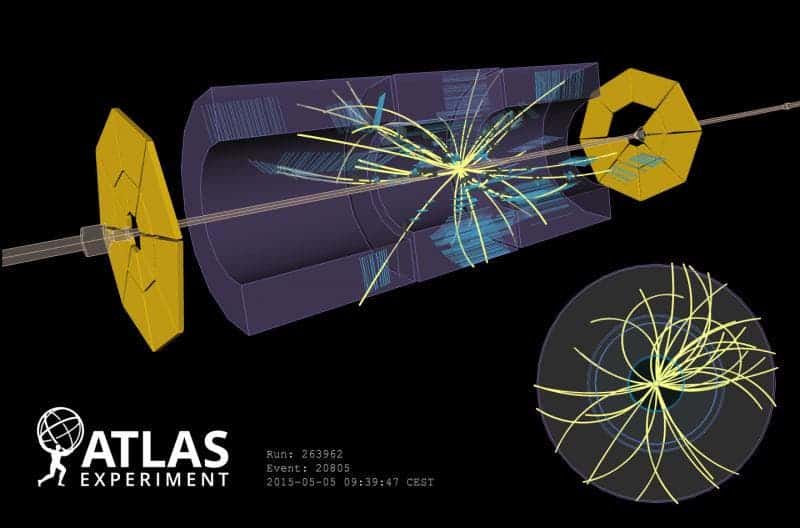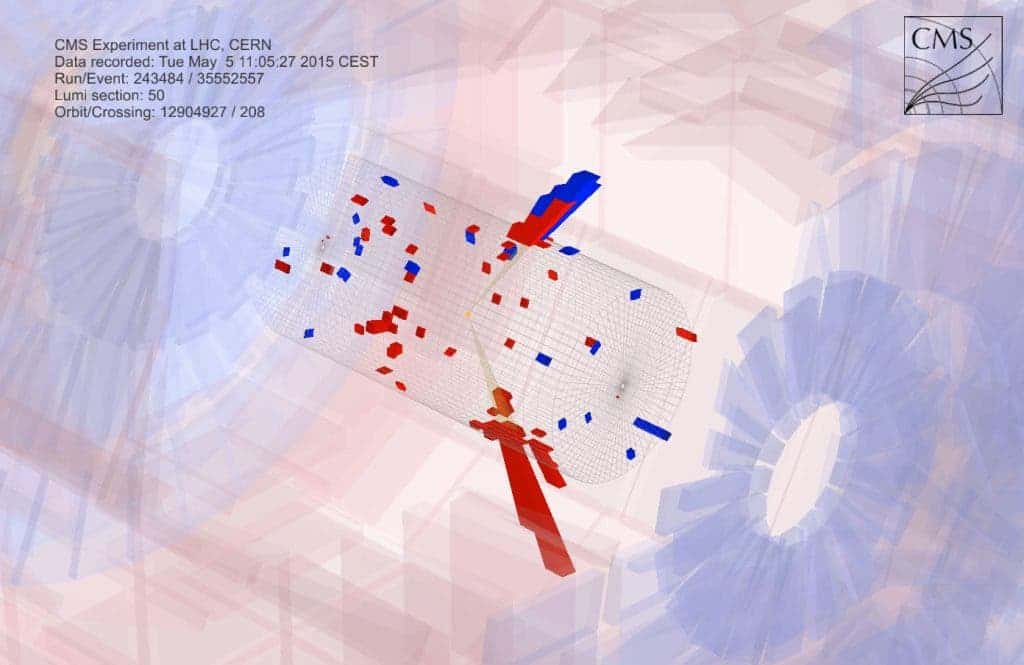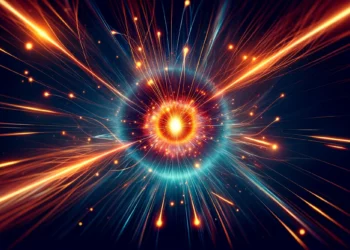The Large Hadron Collider (LHC) has smashed its first particle since it was shut down two years ago. The particle accelerator is heating up with some low energy collisions, CERN said in a statement.

“At about half past nine CET this morning, for the first time since the Large Hadron Collider (LHC) started up after two years of maintenance and repairs, the accelerator delivered proton-proton collisions to the LHC experiments ALICE, ATLAS, CMS and LHCb at an energy of 450 gigaelectronvolts (GeV) per beam,” the press release read.
In case you’re not aware what all the fuss is about, the LHC is the world’s largest and most powerful particle accelerator; it’s also the largest single machine in the world. The aim of the LHC is to allow physicists to test the predictions of different theories of particle physics and high-energy physics like the Standard Model, and in particular to prove or disprove the existence of the Higgs Boson – a theoretical particle which is crucial to modern particle physics, as it is proposed by the Standard Model. So far, LHC has given some tantalizing evidence, but many physicists are still awaiting a confirmation of the boson’s discovery.
“It’s a nice milestone today,” said Dave Charlton, spokesperson for the LHC’s huge multipurpose Atlas detector. “There were a lot of smiling faces in the control room today.”
In 2012, the LHC was shut down for maintenance and to allow rising its power from 8 TeV to 13 TeV, allowing it to smash particles at at higher energies, potentially detecting new particles and particle interactions. So far, the particle accelerator went to “only” 450 gigaelectronvolts (GeV) per beam (0.45 TeV).

“Though the first beam at 6.5 TeV circulated successfully in the LHC last month, there are many more steps before the accelerator will deliver high-energy collisions for physics to the LHC experiments. Well before the full physics programme begins, the LHC operations team will collide beams at 13 TeV to check the beam orbit, quality and stability,” CERN continued in their press release.
The particle accelerator is expected to reach full power in June.






